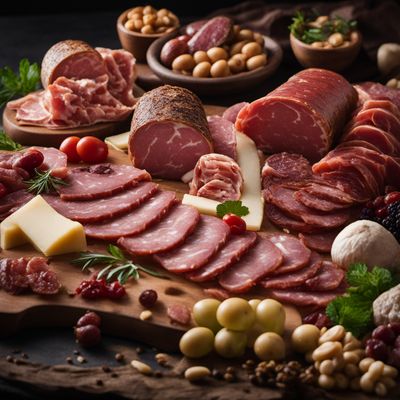
Ingredient
Processed or preserved meat
Preserved Delights
Processed or preserved meat can come in various forms, such as cured, smoked, or canned. These products are often seasoned or treated with additives to improve their taste and texture. They offer convenience and versatility in cooking, making them a popular choice for quick and easy meals.
Origins and history
The preservation of meat has been practiced for centuries as a way to prevent spoilage and ensure a stable food supply. Different cultures have developed their own methods of preserving meat, such as salting, smoking, and fermenting. Processed and preserved meats have become staples in many cuisines around the world.
Nutritional information
Processed or preserved meat can be a good source of protein, vitamins, and minerals. However, they can also be high in sodium, saturated fats, and additives, which should be consumed in moderation as part of a balanced diet.
Allergens
Processed or preserved meat products may contain allergens such as gluten, soy, or dairy, depending on the specific ingredients and processing methods used. It is important to read the labels and check for any potential allergens before consuming these products.
How to select
When selecting processed or preserved meat, read the labels carefully to understand the ingredients and processing methods used. Look for products with minimal additives and preservatives. Opt for high-quality brands that prioritize natural ingredients and sustainable sourcing.
Storage recommendations
To maintain the freshness and quality of processed or preserved meat, follow the storage instructions provided on the packaging. Most products can be stored in the refrigerator or pantry at a cool and dry place. Once opened, they should be consumed within a certain period to prevent spoilage.
How to produce
Producing processed or preserved meat requires specialized equipment and knowledge of preservation techniques. It is best left to professionals in the food industry who have the necessary facilities and expertise to ensure food safety and quality.
Preparation tips
Processed or preserved meat can be used in a variety of dishes, such as sandwiches, salads, pasta sauces, and stews. They can add flavor, texture, and convenience to meals. However, it is important to balance their consumption with fresh and unprocessed foods for a healthy diet.
Culinary uses
Processed or preserved meat is commonly used in dishes like ham sandwiches, bacon-wrapped appetizers, canned sausages, and jerky. They are popular in many cuisines around the world, including American, European, and Asian cuisines.
Availability
Processed or preserved meat products are widely available in supermarkets, grocery stores, and specialty food stores. They can be found in most countries, although specific varieties may vary depending on regional preferences.

